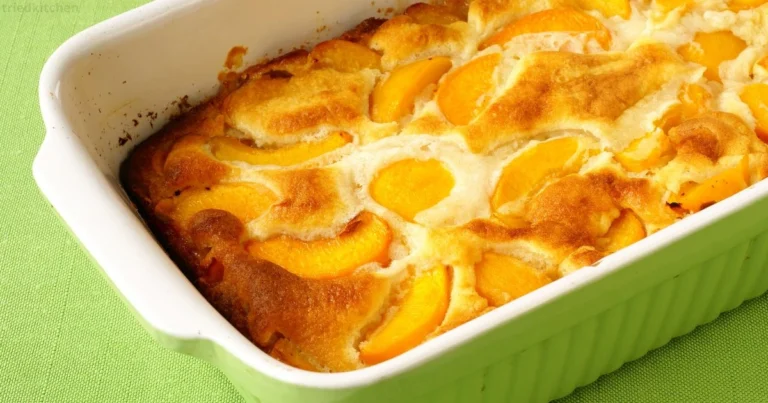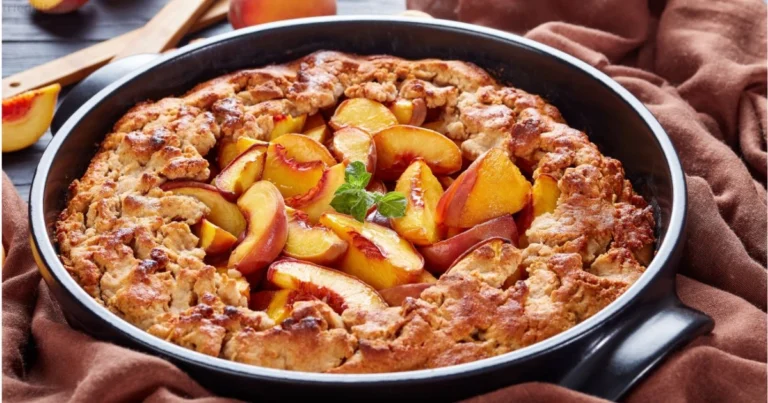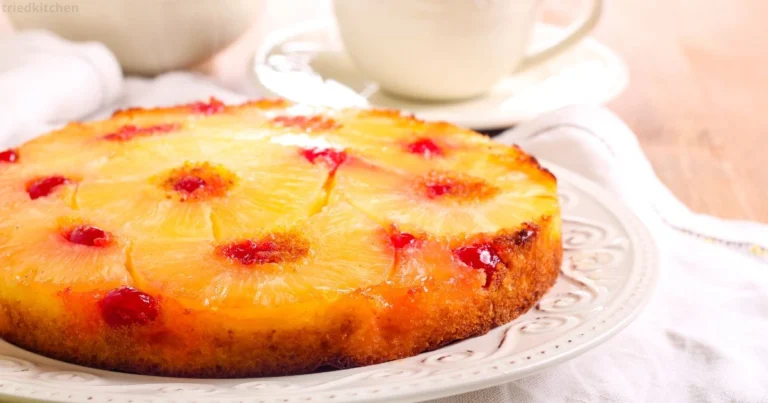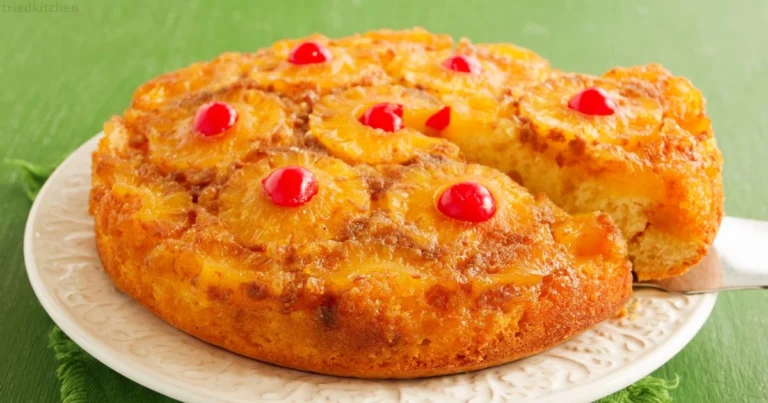Easy Sour Cream Cake Recipe for Beginners
Do you remember that feeling? The quiet hum of the oven, the intoxicating aroma of something sweet baking, and the anticipation building with every tick of the clock. For so many of us, the kitchen is more than just a place to cook; it’s a sanctuary, a place where cherished memories are forged and simple joys are discovered. But perhaps you’ve felt a twinge of apprehension, watching seasoned bakers whip up seemingly complex culinary creations, and thought to yourself, “I could never achieve that.” Well, let me reassure you, you absolutely can. Imagine the pure delight of sinking your teeth into a slice of perfectly moist, tender cake, knowing you brought that magic to life with your own hands. This isn’t merely a recipe; it’s an open invitation to rediscover the profound joy of baking, even if you consider yourself a complete novice. Our easy sour cream cake recipe is meticulously designed to dissolve any baking apprehension, leaving you with nothing but delicious triumphs and a blossoming confidence in your culinary capabilities.
Why Sour Cream Cake is Your Beginner Baking Best Friend
If you’re new to the world of baking, you might be wondering why sour cream, of all ingredients, is highlighted as a superstar. The truth is, sour cream is an unsung hero in the baking realm, especially for those just starting their journey. Its unique composition brings several incredible benefits to your cake, transforming a simple batter into a masterpiece of texture and flavor.
Firstly, sour cream is a champion of moisture. Unlike thin liquids such as milk, sour cream adds moisture without excessively thinning your batter. This results in a cake with a remarkably tender and fine crumb, ensuring that every mouthful is soft and delightful. You won’t find yourself wrestling with a dry, crumbly cake when sour cream is on your side.
Beyond moisture, sour cream contributes significantly to the richness and velvety texture of your baked goods. It boasts a higher fat content compared to other common dairy products like whole milk or buttermilk. This elevated fat content translates to a cake that feels luxurious and substantial on your palate, offering a satisfying mouthfeel that’s genuinely hard to resist. Think about the difference between a light sponge and a dense, rich pound cake – sour cream leans towards that indulgent richness.
Then there’s the acidic component of sour cream. This acidity plays a critical role in the chemistry of baking. It helps to tenderize the gluten strands in your batter. Gluten, while necessary for structure, can sometimes lead to a tough product if overdeveloped. The acid in sour cream works to break down these strands, resulting in a cake that is exceptionally tender. Furthermore, this acidity reacts beautifully with baking soda, a common leavening agent. This reaction produces carbon dioxide gas, which helps your cake rise, creating that lovely airy texture without requiring complex techniques. Many experienced bakers will confirm that baking soda, activated by acid, also contributes to a wonderfully soft consistency.
Finally, sour cream imparts a subtle, tangy flavor that elevates the overall taste profile of your cake. It’s not overpowering; instead, it provides a delicate counterpoint to the sweetness, adding a nuanced depth that makes your sour cream cake truly stand out. This balanced flavor profile makes it incredibly versatile, ready to be enjoyed as is or adorned with various frostings and additions. Embracing a sour cream cake recipe means you are setting yourself up for success, ensuring your first attempts are met with applause rather than frustration.
Gathering Your Sweet Success: Ingredients for Our Easy Sour Cream Cake
Before you embark on your baking adventure, a crucial step for any beginner is to ensure you have all your ingredients ready and measured. Think of it as preparing your artistic palette before you paint. This not only streamlines the process but also prevents last-minute scrambling. For the finest outcomes with your sour cream cake, pay close attention to the temperature of your ingredients; aiming for room temperature is paramount for certain items, as you’ll discover.
- Key Points:
- Emphasize using room temperature ingredients for best results.
- Briefly explain why each ingredient is important (e.g., baking powder for lift).
- Suggest common pantry staples.
- Keywords: sour cream cake ingredients, simple cake ingredients, beginner baking supplies
The Essential Lineup:
To create your moist and tender sour cream cake, you will need the following components:
| Ingredient | Quantity | Notes |
| All-Purpose Flour | 2 cups | Sifting your flour before measuring is always a good practice. It aerates the flour and removes any clumps, contributing to a lighter cake texture. If you don’t have a sifter, whisk it vigorously in a bowl. |
| Granulated Sugar | 1 ½ cups | This provides sweetness and also helps retain moisture in the cake, contributing to its tender crumb. |
| Baking Powder | 2 teaspoons | This is a primary leavening agent, responsible for giving your cake its desirable rise. Ensure it’s fresh for optimal performance (you can test it by adding a little to hot water – it should fizz). |
| Baking Soda | 1 teaspoon | Working in tandem with the acidity of the sour cream, baking soda provides additional lift and promotes a soft texture. Test its freshness by mixing a pinch with a spoonful of vinegar; it should bubble vigorously. |
| Salt | ½ teaspoon | Don’t skip the salt! It’s not just for savory dishes. In baking, salt balances the sweetness and enhances all the other flavors, making them more pronounced and delightful. |
| Unsalted Butter | ½ cup (1 stick) | Ensure your butter is softened to room temperature. This is vital for creaming with sugar, which incorporates air into the mixture, creating a light and airy structure. Cold butter will not cream properly. |
| Large Eggs | 3 | Like butter, eggs should be at room temperature. This allows them to emulsify more effectively with other ingredients, leading to a smoother, more cohesive batter and a finer-textured cake. |
| Sour Cream | 1 cup | Opt for full-fat sour cream for the best results in terms of richness, moisture, and tenderness. Also, make sure it’s at room temperature for seamless incorporation into the batter. |
| Vanilla Extract | 1 tablespoon | A classic flavor enhancer that adds warmth and depth to your cake. Use pure vanilla extract for the most authentic taste. |
A Quick Word on Room Temperature Ingredients: You might wonder why so many recipes, including this one, stress the importance of room temperature butter, eggs, and sour cream. When these ingredients are at a similar temperature, they combine much more readily and evenly. Cold ingredients, particularly butter, can cause the batter to curdle or become lumpy, leading to a denser, less uniform cake. Room temperature dairy and eggs can better create an emulsion, trapping air, which then expands in the oven to give you that wonderfully fluffy texture. Plan ahead and take these items out of the refrigerator at least 30 minutes to an hour before you begin mixing.
Step-by-Step Sweetness: How to Make Your First Sour Cream Cake
Now that you have all your ingredients meticulously measured and ready, it’s time to bring this delightful sour cream cake to life. Don’t be overwhelmed; baking, especially with a beginner-friendly recipe like this, is a series of logical steps. Focus on each stage, and you’ll find the process incredibly rewarding. Remember, patience is your best companion in the kitchen.
- Key Points:
- Break down the baking process into simple, numbered steps.
- Include tips for each step (e.g., don’t overmix, proper pan preparation).
- Emphasize patience and enjoying the process.
- Keywords: how to bake sour cream cake, easy cake baking steps, beginner cake recipe instructions
Let’s Get Baking!
Follow these simple instructions to bake your moist and tender sour cream cake:
- Prep Your Pan: Begin by preheating your oven to 350°F (175°C). While the oven heats up, prepare your baking pan. You can use a 9×13 inch baking pan for a sheet cake or two 8-inch round cake pans for a layer cake. Grease the inside of the pan thoroughly with butter or a non-stick baking spray. For an extra layer of protection against sticking, dust the greased pan lightly with flour, tapping out any excess. If using round pans, consider lining the bottoms with parchment paper for effortless removal.
- Combine Dry Ingredients: In a spacious mixing bowl, use a whisk to combine your all-purpose flour, granulated sugar, baking powder, baking soda, and salt. Whisking ensures these dry components are uniformly distributed, preventing pockets of leavening agents or salt in your finished cake. Set this bowl aside for a moment.
- Cream Butter and Sugar: In a separate, larger bowl, or the bowl of your stand mixer, place your softened unsalted butter. Using an electric mixer (either stand or hand-held), beat the butter on medium speed until it’s light and fluffy, usually for 1-2 minutes. Gradually add the granulated sugar to the butter, continuing to beat until the mixture is pale in color and very light and airy. This “creaming” process is critical; it incorporates air into the butter and sugar, which contributes significantly to the cake’s light texture.
- Add Eggs and Vanilla: With the mixer still running on medium-low, add the large eggs one at a time. It’s important to fully incorporate each egg into the butter-sugar mixture before adding the next. Scrape down the sides of the bowl as needed to ensure everything is well combined. Once all eggs are incorporated, stir in the vanilla extract.
- Alternate Dry and Wet: This step requires a bit of care. With your mixer set to the lowest speed, you will gradually add the dry ingredients mixture to the wet ingredients, alternating with the sour cream. A good pattern to follow is to begin and end with the dry ingredients. For example:
- Add about one-third of the dry ingredient mixture to the wet ingredients. Mix just until barely combined.
- Add half of the sour cream. Mix until just incorporated.
- Add another one-third of the dry ingredients. Mix gently.
- Add the remaining sour cream. Mix.
- Finally, add the last one-third of the dry ingredients. The key here is not to overmix. Overmixing develops too much gluten in the flour, which can lead to a tough, rubbery cake. Stop mixing as soon as no streaks of dry flour are visible. A few small lumps are perfectly fine!
- Pour and Bake: Gently pour the prepared batter evenly into your greased and floured (or parchment-lined) pan(s). Use a spatula to level the top of the batter. Place the pan(s) in the preheated oven. Bake for approximately 30-35 minutes for a 9×13 inch pan, or 25-30 minutes for two 8-inch round pans. The exact baking time may vary slightly depending on your oven, so keep an eye on it. The cake is done when a wooden skewer or toothpick inserted into the center comes out clean or with only a few moist crumbs attached.
- Cooling Down: Once baked, remove the cake from the oven. Let it cool in the pan on a wire rack for about 10-15 minutes. This cooling period allows the cake to firm up slightly, making it less prone to breaking when you remove it. After this initial cooling, carefully invert the cake onto the wire rack to cool completely. Allowing the cake to cool fully before frosting is essential; otherwise, your frosting will melt and slide off.
Elevate Your Easy Sour Cream Cake: Frosting & Flavor Variations
Your delicious sour cream cake, straight from the oven, is fantastic on its own. However, with a few simple additions and a touch of creativity, you can transform it into something truly special. For beginner bakers, the idea of frosting might seem daunting, but there are many straightforward options that yield impressive results. Similarly, a basic recipe serves as a perfect canvas for exploring different flavor profiles.
- Key Points:
- Suggest simple frosting ideas (buttercream, glaze, powdered sugar dusting).
- Offer easy flavor variations (lemon zest, almond extract, chocolate chips).
- Encourage experimentation.
- Keywords: sour cream cake frosting, cake flavor variations, easy cake decorations
Simple Frosting Ideas:
You don’t need elaborate piping skills to make your cake look and taste incredible. Here are some easy frosting options:
- Classic Vanilla Buttercream: This is a timeless choice and surprisingly easy to prepare. You’ll need softened unsalted butter, powdered sugar (also known as confectioners’ sugar), a splash of milk or cream, and vanilla extract. Beat the butter until fluffy, gradually add the sifted powdered sugar, then mix in the milk and vanilla until you achieve a smooth, spreadable consistency. It’s forgiving and always a crowd-pleaser.
- Lemon Glaze: For a lighter, tangy finish that perfectly complements the subtle tartness of the sour cream, a lemon glaze is ideal. Simply whisk together powdered sugar with fresh lemon juice until you reach your desired drizzling consistency. It sets quickly and adds a bright, refreshing zing.
- Simple Powdered Sugar Dusting: Sometimes, less is more. For an understated yet elegant presentation, simply dust the completely cooled cake with a fine layer of powdered sugar using a small sieve. This is perfect if you prefer a less sweet option or want the cake’s natural flavor to shine.
Creative Twists:
Your basic sour cream cake recipe is a foundation. Feel free to experiment with these simple flavor variations to customize your creation:
- Lemon Zest Delight: For a burst of bright, citrusy flavor, add the zest of one medium lemon (about 1 tablespoon) to your cake batter along with the wet ingredients. The fragrant oils in the zest will infuse the cake with a wonderful aroma and taste.
- Almond Essence: Swap out the vanilla extract for almond extract for a delicate, nutty flavor. Start with ½ teaspoon of almond extract and adjust to your preference, as almond extract can be quite potent. This variation pairs beautifully with a simple powdered sugar dusting or a light almond-flavored glaze.
- Chocolate Chip Surprise: Who doesn’t love chocolate chips? Gently fold in ½ to ¾ cup of mini chocolate chips into the batter during the final mixing stage, just before pouring it into your pan. They’ll melt slightly during baking, creating pockets of gooey chocolate.
- Berry Burst: For a fresh, fruity twist, gently fold in ½ cup of fresh blueberries or raspberries into the batter. If using frozen berries, toss them with a tablespoon of flour first to prevent them from sinking to the bottom of the pan.
- Cinnamon Swirl: After pouring half of your batter into the pan, sprinkle a mixture of 1 tablespoon cinnamon and ¼ cup granulated sugar over it. Top with the remaining batter and swirl gently with a knife or skewer for a delightful cinnamon ribbon throughout the cake.
Remember, baking is a journey of discovery. Don’t hesitate to explore and make these simple additions your own.
Troubleshooting for Beginners: Common Sour Cream Cake Questions
Every baker, regardless of experience, encounters a hiccup or two in the kitchen. It’s part of the learning process! For beginners, these moments can feel particularly disheartening. But rest assured, most common cake problems have simple explanations and even simpler solutions. Let’s address some typical issues you might face with your sour cream cake and how to navigate them.
- Key Points:
- Address common issues new bakers face (sinking cake, dry cake, sticky cake).
- Provide practical solutions.
- Reassure readers that mistakes are part of learning.
- Keywords: sour cream cake troubleshooting, cake baking problems, beginner baking tips
My Cake Sunk in the Middle! What Happened?
A sunken cake is one of the most common and frustrating baking disappointments. If your sour cream cake dips in the center, here are the likely culprits:
- Oven Door Opened Too Soon: The most frequent offender! Opening the oven door, especially in the first two-thirds of baking, causes a sudden drop in temperature. This shock can make the delicate cake structure collapse before it has a chance to set.
- Solution: Resist the urge to peek! Only open the oven door during the last 10-15 minutes of baking, and only if absolutely necessary to check for doneness. Trust your oven thermometer and the recommended baking time.
- Underbaked Cake: If the center isn’t fully cooked, it lacks the structure to support itself once removed from the heat.
- Solution: Always perform the “skewer test.” Insert a wooden skewer or toothpick into the very center of the cake. If it comes out clean or with only a few moist crumbs, it’s done. If there’s wet batter, return it to the oven for a few more minutes.
- Too Much Leavening Agent or Old Leaveners: An excessive amount of baking powder or baking soda can cause the cake to rise too quickly and then collapse. Conversely, expired leavening agents won’t provide enough lift, leading to a dense, sunken cake.
- Solution: Measure accurately with level spoons. Always check the expiration dates on your baking powder and baking soda. You can test baking soda by mixing it with vinegar (it should fizz) and baking powder with hot water (it should bubble). If no reaction, replace them.
Why is My Sour Cream Cake Dry?
A dry cake is another common issue that can be easily remedied once you know the cause:
- Overmixing the Batter: This is perhaps the biggest culprit for dry, tough cakes. When you mix flour with liquid, gluten develops. Overmixing causes too much gluten to form, resulting in a cake with a chewy, dense, and dry texture.
- Solution: Mix the wet and dry ingredients just until combined. As soon as you no longer see streaks of dry flour, stop mixing. A few small lumps are perfectly acceptable.
- Overbaking the Cake: Baking your cake for too long in the oven will inevitably dry it out, making it crumbly and unappealing.
- Solution: Start checking for doneness a few minutes before the recipe’s minimum baking time. Use the skewer test described above.
- Too Much Flour: Inaccurate measurement of flour can lead to an excess of dry ingredients, throwing off the moisture balance.
- Solution: For precise results, use a kitchen scale to measure flour by weight (1 cup of all-purpose flour is typically around 120-130 grams). If using measuring cups, use the “spoon and level” method: spoon flour into the measuring cup until it overflows, then level off the excess with a straight edge (like a knife). Never scoop flour directly from the bag, as this compacts it.
Remember, every baking “failure” is a learning opportunity. Don’t be discouraged! With each attempt, you’ll gain a better understanding of how ingredients interact and how your oven behaves, paving the way for consistent baking success.
FAQs About Our Easy Sour Cream Cake Recipe
You’ve got questions, and we’ve got answers! As you venture into baking your first sour cream cake, some common inquiries might pop up. This section aims to address them, ensuring you feel confident and informed throughout your baking journey with this easy sour cream cake recipe.
- Key Points:
- Address popular questions related to the recipe and ingredients.
- Reinforce the “easy” and “beginner-friendly” aspects.
- Keywords: sour cream cake recipe FAQs, easy sour cream cake, beginner baking questions
Frequently Asked Questions:
- Can I use light sour cream for this sour cream cake recipe? While you can use light sour cream in a pinch, it’s highly recommended to use full-fat sour cream for this recipe. Full-fat sour cream contains more fat, which is crucial for achieving the rich, moist, and tender texture that makes this cake so delightful. Light sour cream has less fat and more water, which can result in a slightly drier cake with a less luxurious mouthfeel. For the best possible outcome with your sour cream cake, stick to the full-fat version.
- How long does this easy sour cream cake last? When stored properly, your homemade sour cream cake will stay fresh and delicious for several days. If kept in an airtight container at room temperature, it typically maintains its quality for about 3 to 4 days. If you place it in the refrigerator, it can extend its freshness up to a week. Just ensure it’s well-sealed to prevent it from drying out.
- Can I freeze this sour cream cake? Absolutely, you can freeze your sour cream cake! Freezing is an excellent way to preserve its freshness for longer. To freeze, ensure the cake is completely cooled. You can freeze it whole or in individual slices. Wrap the cake or slices tightly in two layers of plastic wrap, then an additional layer of aluminum foil. This double wrapping helps prevent freezer burn. It can be stored in the freezer for up to 2 to 3 months. When you’re ready to enjoy it, simply thaw it overnight in the refrigerator, or for individual slices, at room temperature for a couple of hours.
- Do I have to use room temperature ingredients for this sour cream cake recipe? Yes, it is strongly recommended! Using room temperature ingredients (especially butter, eggs, and sour cream) is a simple but incredibly effective tip that will significantly improve your baking results. When these ingredients are at room temperature, they emulsify more easily, meaning they blend together smoothly and evenly, creating a uniform batter. This process helps trap air, which expands during baking, resulting in a lighter, fluffier, and more tender cake texture. Cold ingredients, on the other hand, can cause the batter to curdle or become lumpy, leading to a denser or unevenly baked cake.
- What if I don’t have buttermilk? Can I still make this sour cream cake? This particular recipe is formulated specifically to use sour cream, not buttermilk, for its unique contributions to moisture, richness, and tang. Therefore, you do not need buttermilk for this sour cream cake recipe. If you encounter other recipes that call for buttermilk and you don’t have it, a common substitute is to add 1 tablespoon of lemon juice or white vinegar to a cup of regular milk and let it sit for about 5-10 minutes until it slightly curdles. However, for this recipe, sour cream is the star, and no substitution for it is necessary.
Conclusion: Your Confident First Bake
And there you have it! A truly effortless sour cream cake recipe, meticulously designed to bring the sheer joy of baking within the confident grasp of every beginner. From the readily available ingredients to the clear, straightforward steps, this cake isn’t just a dessert; it’s your personal gateway to a world brimming with delicious culinary possibilities.
You’ve learned the secrets behind sour cream’s magic – how it transforms a simple batter into a moist, tender, and subtly tangy delight. You’ve navigated the essential steps of preparation, mixing, and baking, understanding the importance of details like room temperature ingredients and gentle blending. And you’ve explored easy ways to personalize your creation, from a simple glaze to a burst of citrus or chocolate.
Do not hesitate to experiment, to infuse your own unique touch, and most importantly, to savor every single, tender bite you’ve brought to life. This journey is about more than merely baking a cake; it’s about cultivating confidence, crafting treasured memories in your kitchen, and discovering the profound, sweet satisfaction of homemade goodness.
So go on, preheat that oven with a newfound sense of readiness, gather your ingredients, and let the delicious magic begin. Your first perfect sour cream cake awaits!







